Uniform Guide
Click any of the titles below to learn more how each uniform part shall be prepared before a training night or a parade.
The lower point of the front crease of the wedge is to be in the center of your forehead. The front edge of the cap is to be 2.5 cm (1 in.) above your right eyebrow. To be sure the cap is 2.5 cm (1 in.) above the right eyebrow, you can use the measurement of the width of two fingers. If your hair hangs down on your forehead you should be sure to tuck it under your wedge when in uniform.
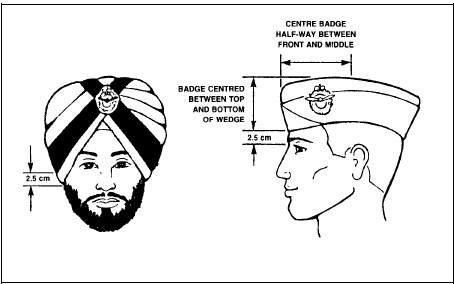
Hair shall not prevent the proper wear of a military headdress or protective equipment. Hair must be worn so that without a headdress the cadet’s face is visible. Full or partial shaving of hair on the head is permitted. Colouring of hair is permitted. The wearing of wigs, dreadlocks, or hair extensions is permitted. Long hair is permitted but must be secured accordingly when extending below the top/ridge of the shoulder in such a manner as to prevent hair from covering the face. Acceptable accessories to secure hair include but are not limited to, clips, barrettes, bobby pins, fabric elastics, elastic bands, and hair nets.
In cases where safety may be compromised, or where a hairstyle that is associated with a cultural, religious, or spiritual belief that does not align with this policy, cadets are to refer to DAOD 5516-3, Religious or Spiritual Accommodation and Section 3 of the official CJCR dress instructions.
All styles of facial hair and sideburns are authorized. Facial hair may be braided / ponytail style and coloured. Accessories to secure facial hair include but are not limited to: barrettes, bobby pins, fabric elastics, elastic bands, and hair nets.
Necktie
Your necktie should be ironed and tidy. The necktie shall be tied with the Windsor knot and done up to the collar when worn. See the visual guide below to learn how to tie a Windsor knot, or watch this helpful video.
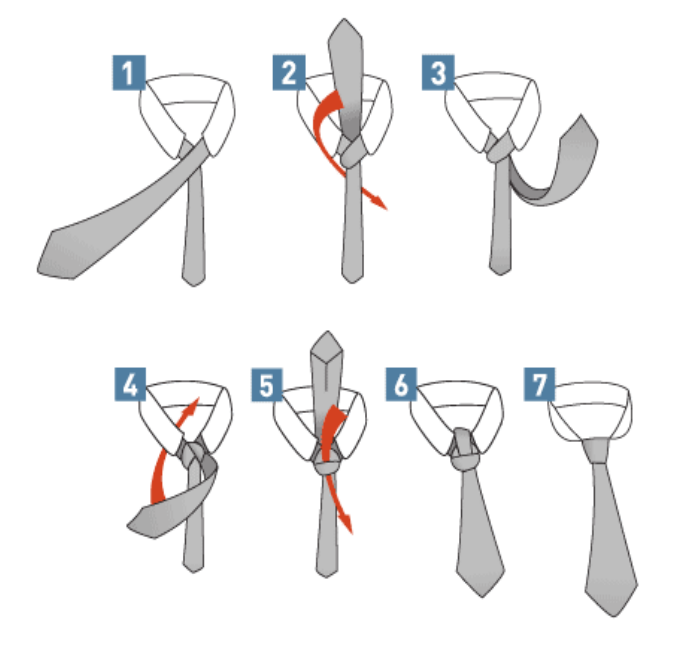
Nametag
Name tags shall be worn by cadets as an item of dress, and these must be obtained locally:
- name tags shall be standard CAF pattern, laminated and detachable. Air cadet name tags are air force blue. Dimensions are 6.3 cm (2-1/2 in.) in length and 1.2 cm (1/2 in.) in height, inscribed with white lettering 0.6 cm (1/4 in.) high, indicating surname; and
- name tags may be worn with ceremonial and service orders of dress.
- Name tags shall be worn and pinned above the right breast pocket of the dress shirt/tunic, aligned above the centre button of the pocket flap. Use a stiff piece of paper or cardboard behind your nametag to ensure it stays in place and remains presentable.
Jewelry
The wearing of jewellery is permitted in uniform, however, cadets must not:
- wear jewellery over uniform items;
- while in uniform, have ear piercings and ear gauges/spacers of more than 2.5 cm diameter or diagonal measurement (dependent on the activity whether for ceremonial or safety reasons, the number of earrings may be restricted);
- wear jewellery in piercings which are normally covered by uniforms if they pose a risk of injury;
- wear jewellery that impairs the cadets’ safety or ability to perform their duties;
- wear jewellery that a cadet knows, or ought reasonably to know, are connected with criminal activities (e.g., criminal gangs), that promote and/or express, on the basis of a prohibited ground of discrimination as defined in the Canadian Human Rights Act (CHRA), the following: hatred, violence, discrimination, or harassment; or
- wear jewellery that a cadet knows, or ought to know, promote and/or express: racism, sexism, misogyny, misandry, xenophobia, homophobia, ableism, or sexually explicit material.
More detailed information regarding specific pieces of jewelry may be found by clicking here.
Tattoos
Tattoos are permitted. However, cadets must not have:
- tattoos that a cadet knows, or ought reasonably to know, are connected with criminal activities (e.g., criminal gangs), tattoos that promote and/or express, on the basis of a prohibited ground of discrimination as defined in the CHRA, the following: hatred, violence, discrimination, or harassment; or
- tattoos that a cadet knows, or ought to know, promote and/or express: racism, sexism, misogyny, misandry, xenophobia, homophobia, ableism, or sexually explicit materials
- tattoos of a cultural nature (such as Inuit face tattoos) shall be allowed.
Check out this video on Air Cadet Badges – this will give you everything you need to know on placing your badges on your tunic
Shoulder Badge (Shoulder Flash). The shoulder badge is worn on both sleeves of the tunic only. The top of the badge is to be 2 cm below the shoulder seam. The bottom of the shoulder flash should parallel the ground when standing at attention.
Rank Badge. Your Rank Badge belong half-way between the shoulder seam and elbow and should be centred.
Proficiency Badge. Your proficiency badge is centred on the left sleeve of the tunic. It is worn immediately above the cuff.
Name Tag. The name tag is worn above the flap of the right breast pocket of the tunic. The bottom of the name tag should be immediately above the top of the flap.
Tunic. When wearing the tunic you shall always keep all pockets buttoned. Be sure all front buttons (except the top) are also fastened. You should keep your tunic well pressed. The sleeves of the jacket shall be roll-pressed with no creases. Be sure your belt is even with no twists. The buckle of your tunic belt is to be centered. The pockets of your tunic should be empty. The tunic should be free of wrinkles and stains. All badges shall be tightly sewn down with like-coloured thread (the thread shall not be visible).
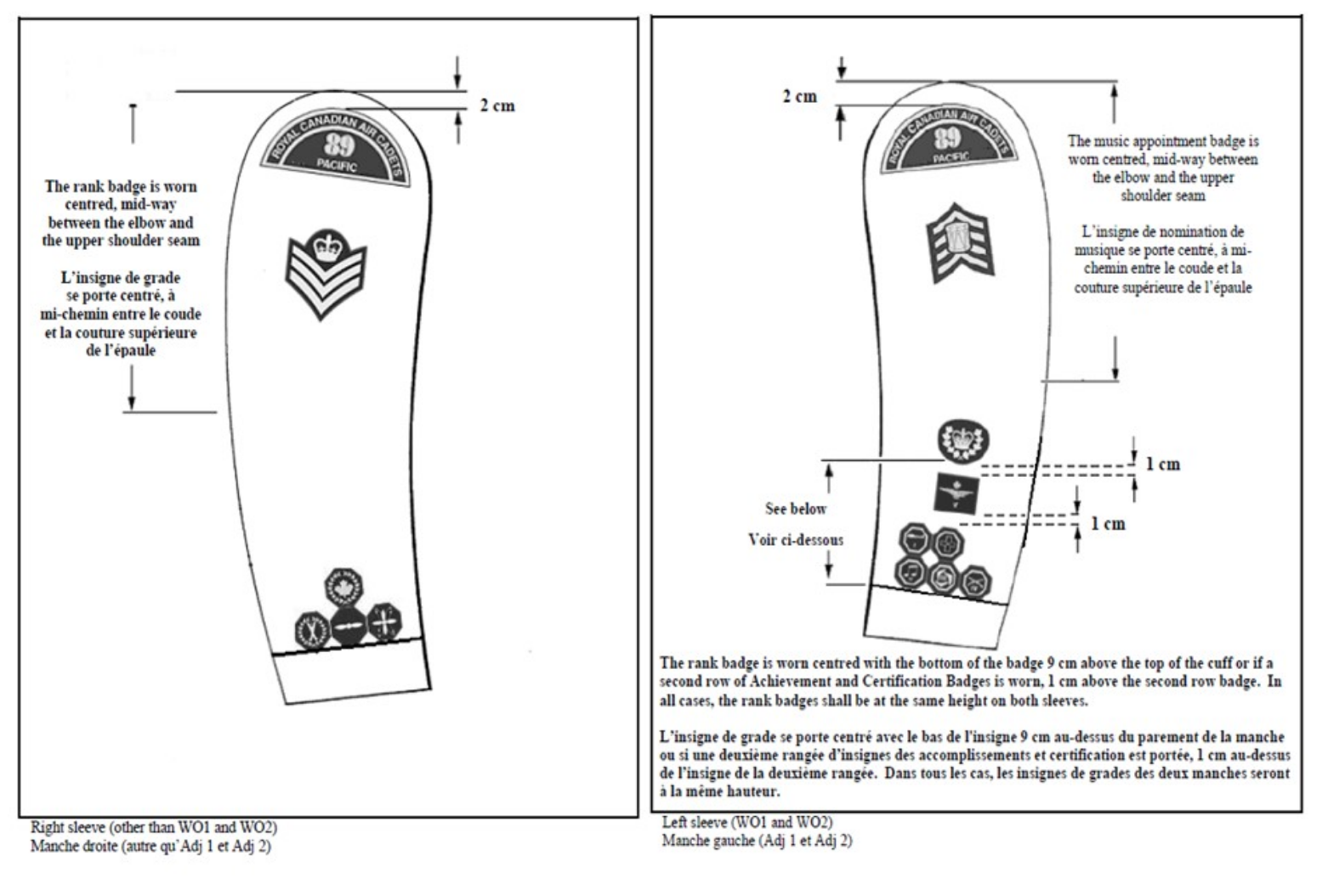
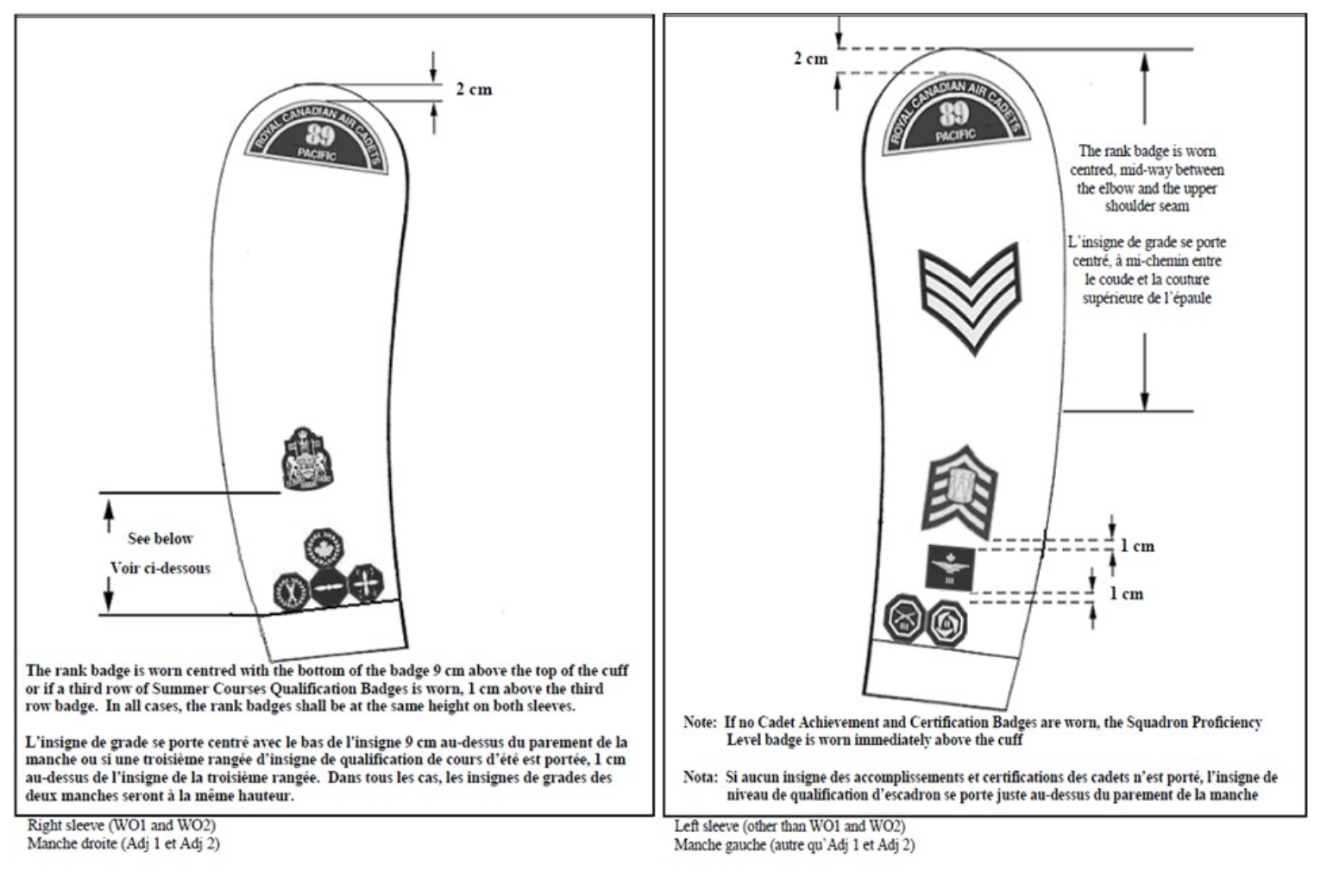
Dress Shirt
Your dress shirt should be clean and free from any imperfections such as burn marks, stains, loose threads or ripped areas. If you require a new dress shirt due to any imperfections or size issues, please see supply to obtain a new one.
Dress shirts should be free of any wrinkles and shall be ironed regularly. A sharp crease should run down the middle of the sleeve, lining up with the middle of where the shoulder flash would regularly go. Pocket flaps should also be ironed down to ensure they stay pressed against the rest of the dress shirt.
Tip: Use lots of water to prevent the dress shirt from burning, allowing you to iron out wrinkles properly and create desired creases.
Tunic
Similar to dress shirts, tunics must remain wrinkle-free and clean. No creases are necessary on tunics, however, they must be kept lint-free by using lint rollers or any lint removal tool. Pocket flaps should also be ironed down to stay flat against the rest of the tunic. No loose threads shall be hanging off any part of the uniform and should be cut off/trimmed to remove them.
Tunics also need to be "duck-tailed", which is a process where you pinch all excess tunic fabric towards the centre of your back, essentially creating two "creases" of equal distance from the centre of your back.
Tip: Use lots of water/steam to prevent shiny spots on the tunic to pop up - aka burning the tunic!
There shall be 4 sharp creases made on the pants in total - two at the front and two at the back.
The creases on the front shall align with the front belt loops and go all the way down to the cuffs of the pants. The back creases should come from the centre back belt loop and make their way down to the cuffs of the pants as well. There should only be one visible crease for each, with no faint crease/marks made alongside the sharper crease - these are called "train tracks". Iron these out to ensure that there is only one sharp, visible crease running down the pant leg.
Tip: Like the tunic, use a lot of steam and water to prevent the pair of pants from burning or creating shiny patches. Use a pillow cover or fabric to act as an additional barrier while ironing and to allow you to create sharper creases.
Polishing
You shall keep your boots in good repair and well shined. The following is one method used to get a good shine on boots:
- remove dust and dirt from the boot with a soft damp cloth (do not use this cloth for polishing);
- use an old toothbrush to remove dirt from the welts;
- use the toothbrush, with polish, to blacken the welts;
- apply a moderate amount of polish to the area of the boot you will polish first; and
- use a polish cloth or other soft cloth wrapped around your index finger and dampened in cool water. You should work one section of the boot at a time. Apply the polish in a circular motion. Start with larger circles to cover the area with polish. Use smaller circles as the polish works into the boot. Continue with the circular motion until you can no longer see the circles formed by the polish.
You will have to continue applying coats of polish in this way until the boots have a high gloss. Considerable patience is required with new or previously unpolished boots. Further tips and tricks may be found by watching this video.
Boot Laces
Your black issue boots are laced straight across. Once done up, you should not be able to visibly see the end of the laces. Watch this video to learn how to properly lace your boots, or see the photo below.
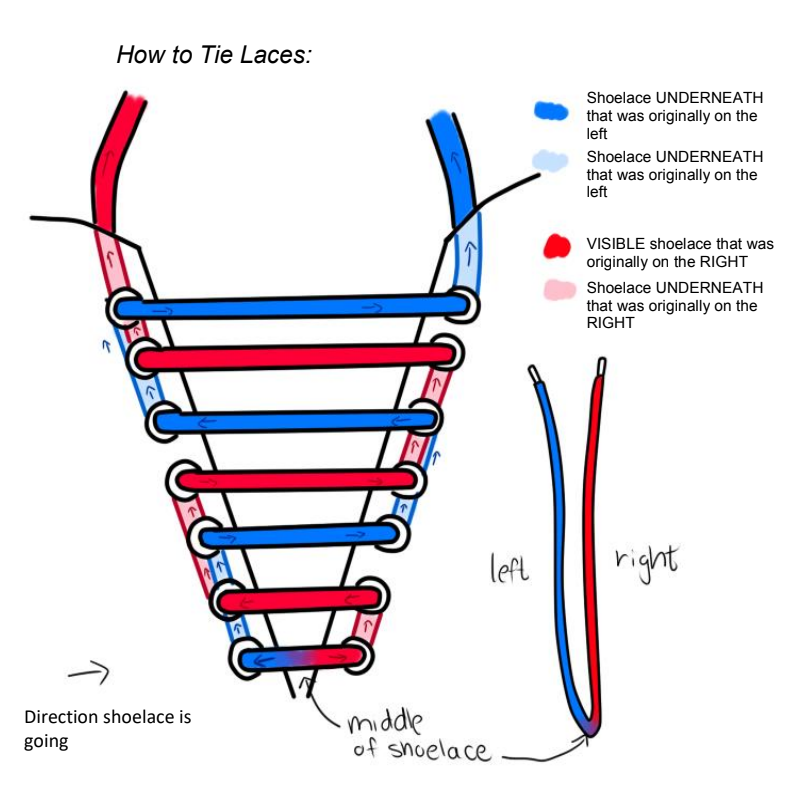
Socks
You should be wearing the wool socks issued alongside your uniform. You may roll up the socks if you find them too long at the ankle.
Uniform and Dress Regulations
All Cadets are expected to be familiar with the contents of, and comply with CATO 55-04 – Air Cadet Dress regulations. Examples of Cadet Orders of dress can be found on the squadron website under the section Cadet Resources
The dress and appearance of Officers and Cadets on all occasions will be such as to reflect credit to the Canadian Forces, The Royal Canadian Air Cadets, and 819 Skyhawk Squadron.
Items of the Cadet Uniform issued from Supply will not be worn in combination with civilian dress.
Cadets in uniform shall be well groomed with footwear cleaned and shone. Their uniform shall be clean and properly pressed at all times. In particular, buttons, fasteners and zippers shall be kept closed. Pockets shall not be bulged; items such as glasses, sun-glasses, glasses cases, pens, pencils, key-rings or paper shall not be visibly extended nor protrude from pockets or be suspended from waist belts or pockets. Headsets from a mp3 player or other personal entertainment device shall not be worn.
The wearing of the Cadet Uniform is authorized for official cadet activities only. Authorization to wear the Cadet Uniform at non-cadet activities, i.e. School Remembrance Day Ceremonies, must be obtained from the Commanding Officer.
Cadets and their parents/guardians are to understand that the uniform and equipment issued by Supply is on loan by DND for the duration of their Cadet career and must be returned at the completion of training. Cadets are also expected to comply with instructions for the care of the uniform, so as to return it in a recyclable condition.
Responsibility for the Uniform
Your uniform is Government property. When you joined cadets your parents signed your enrolment form. By signing the enrolment form your parents have taken responsibility for all parts of your uniform. As a result, you are always responsible for all parts of your uniform. You should follow these rules:
- Do not leave your uniform pieces lying around.
- Mark your name in every piece of your uniform.
- Return damaged or poorly fitting parts of your uniform to your squadron supply and get new parts.
- Be sure that any parts of your uniform that you return are signed off when you return them.
- You must return your uniform promptly if you leave the squadron.
Deportment while in Uniform
When you are in uniform you should present a good appearance. Chewing gum, slouching, hands in pockets, walking arm in arm, and similar actions do not look good for a cadet in uniform. The way you behave in uniform will affect what people think of all cadets. The pride you show in your uniform is a reflection of the pride you have in yourself and your squadron.